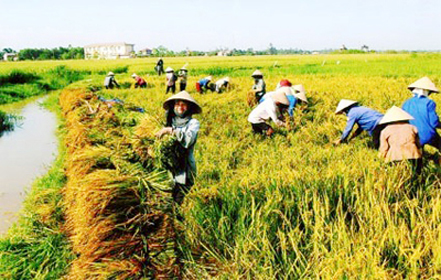An array of free trade agreements (FTAs) coming into effect this year will open up a wide range of new blindingly bright opportunities for the agricultural sector leading to improved investment opportunities along the entire value-chain.
A more perplexing dilemma however, is determining the best business model and strategy to lift agriculture from the production of low value staple food commodities higher up the value chain to make the best of the opportunities.
It was not by chance that the 45th World Economic Forum (WEF) held recently in Davos (Switzerland) placed the issue of food security for more than 7.2 billion people in the world to the forefront of its agenda.
This fact clearly shows the increasingly important role that food producers and suppliers play and most notably highlight Vietnam’s critically important role in ensuring food security in the world.
However, despite being one of the world’s leading agro-forestry-fishery exporters, Vietnam’s agriculture reveals weaknesses— low value products at cheap prices, inefficient use of land and natural resources, limited agricultural investment and poor hygiene and food safety.
 |
With the current status of productivity and quality of agricultural products, Vietnamese farmers and businesses are in a pickle to take advantage of the coming golden opportunities absent extensive investment and renovation. Thus, opportunities could be missed and leave Vietnam stagnant, producing low value commodities.
Investors from the Republic of Korea, Australia and Japan are actively looking for favourable investment opportunities and have embarked on a number of land lease projects for production, processing and exports in Vietnam.
If Vietnamese farmers are off the mark in negotiating these agreements they could find themselves simply working as farm labour for foreign investors, or in other words – they will just be employees on their soil.
In the face of limited agricultural investment, foreign direct investment (FDI) inflows in agriculture are invaluable. Therefore it is critically important that these agreements be structured in a manner that enables local farmers and agro businesses to team up with foreign investors on an equal partnership basis.
On a positive note, in recent times, a series of big enterprises across many fields have shifted their investment in the agricultural sector to large-scale agricultural projects based on high-tech models which have brought higher efficiency.
The expanding capital inflows into the agricultural sector show that sufficient resources to restructure the sector are available – it’s just a matter of sitting down at the negotiating table and working out the details.
To this end however, businesses need the support of the government and more incentives to help entice foreign investors to fund land and infrastructure purchases as well as acquire the necessary technologies to revamp the agriculture sector.
To call for more agricultural investment, the Vietnam Ministry of Agriculture and Rural Development (MARD) has been working hand in hand with multinational groups to implement the public–private- partnership (PPP) model.
Additionally, the MARD, last year, drafted a strategy for attracting FDI in the agro- forestry- fisheries sector until 2030 for submission to the Prime Minister for approval.
Agriculture is the biggest advantage of Vietnam’s economy and it logically follows therefore that agricultural restructuring is crucially important in negotiating free trade agreements. Restructuring is seen as a monumental opportunity that will benefit the whole national economy.
Successful restructuring will not only enable Vietnam to become an agricultural power, but also a promoter of the industry and service sectors in furtherance of transforming into an industrialized and modern nation by 2020.

